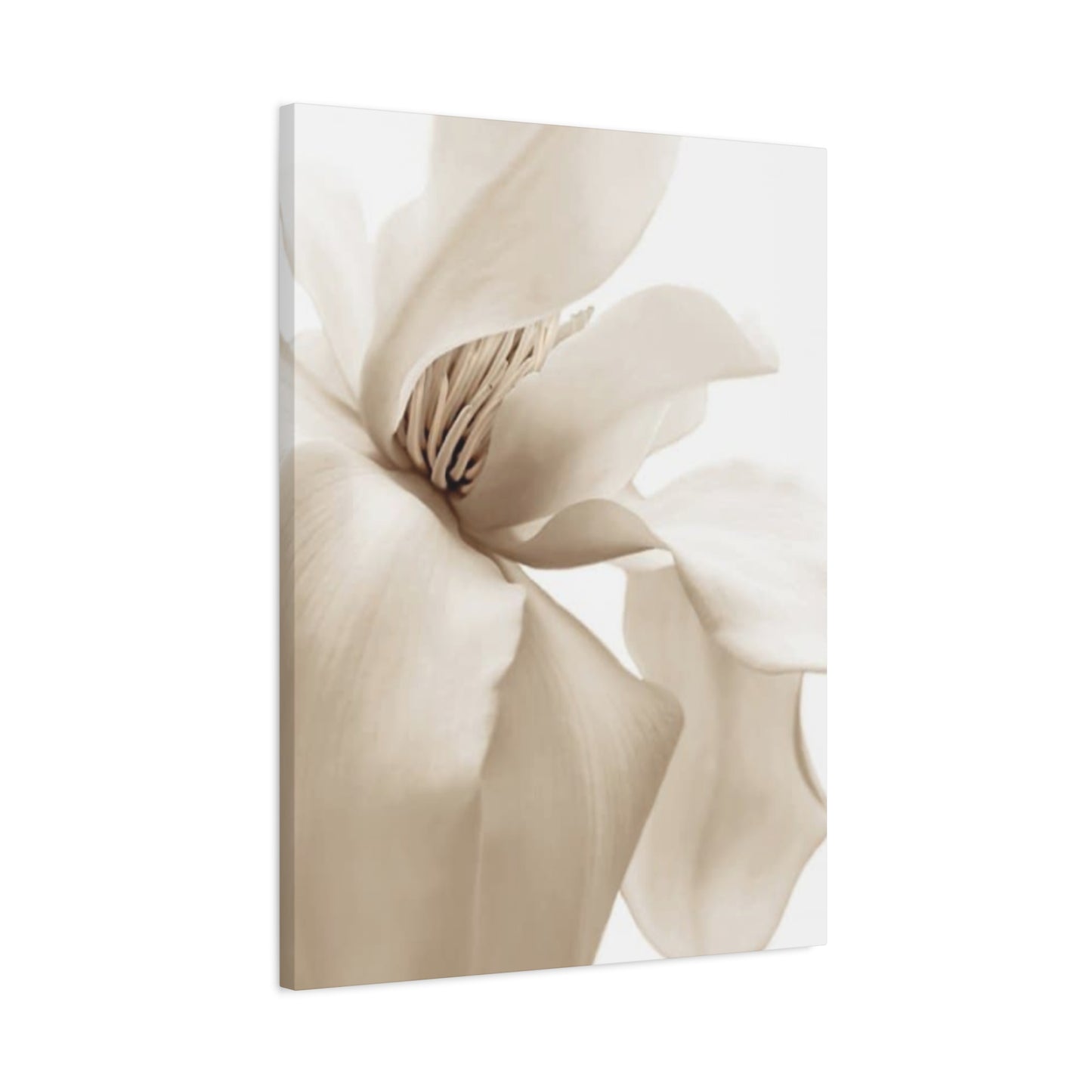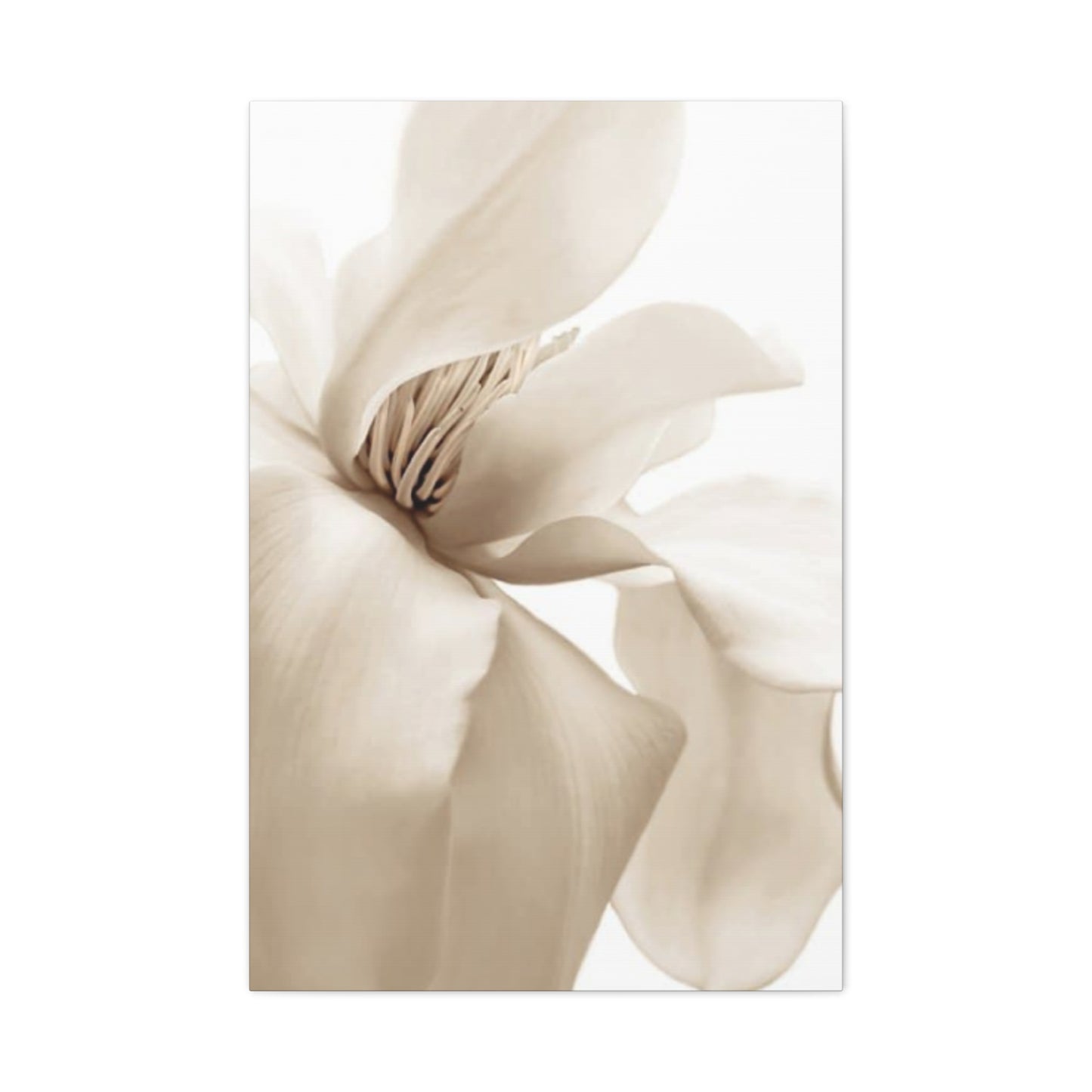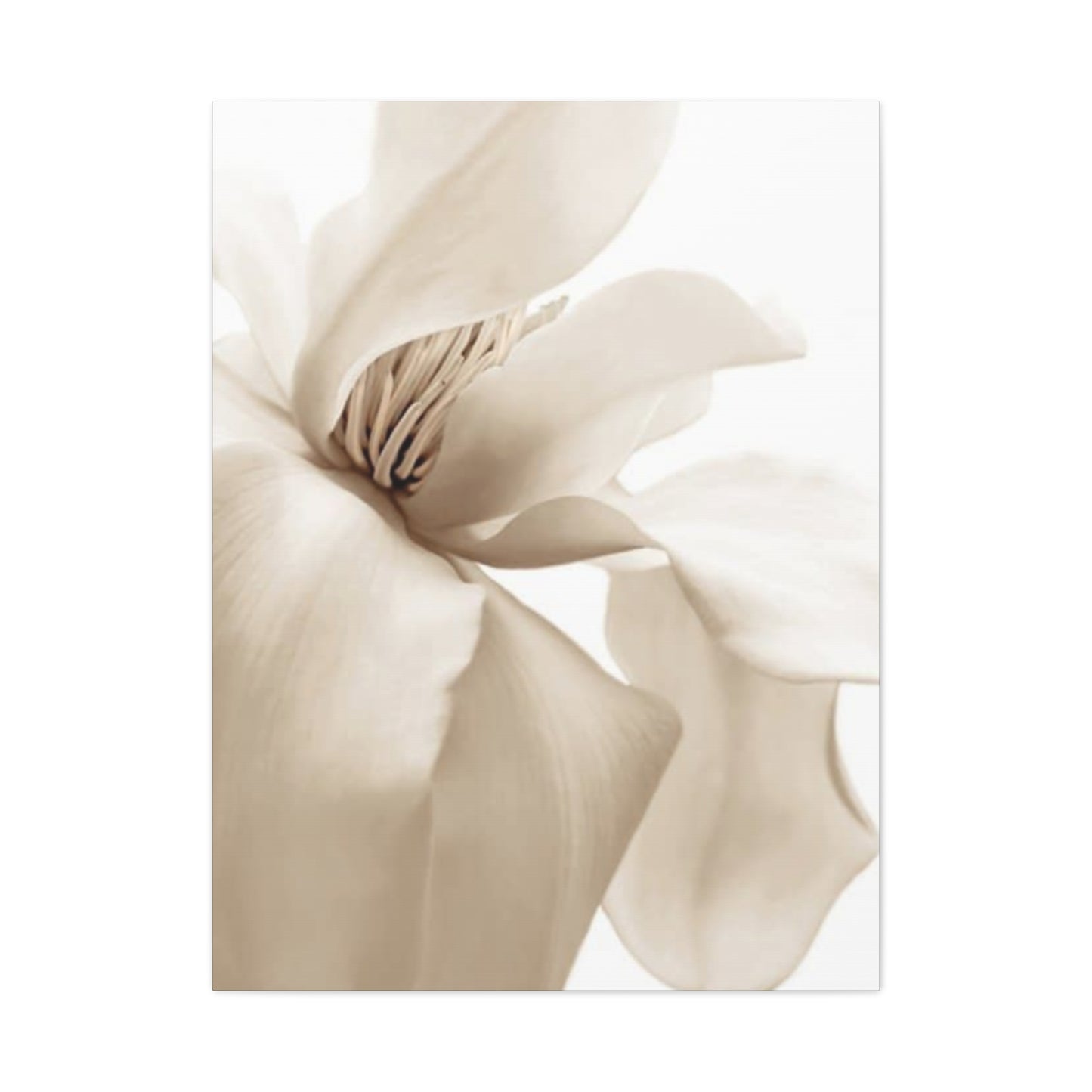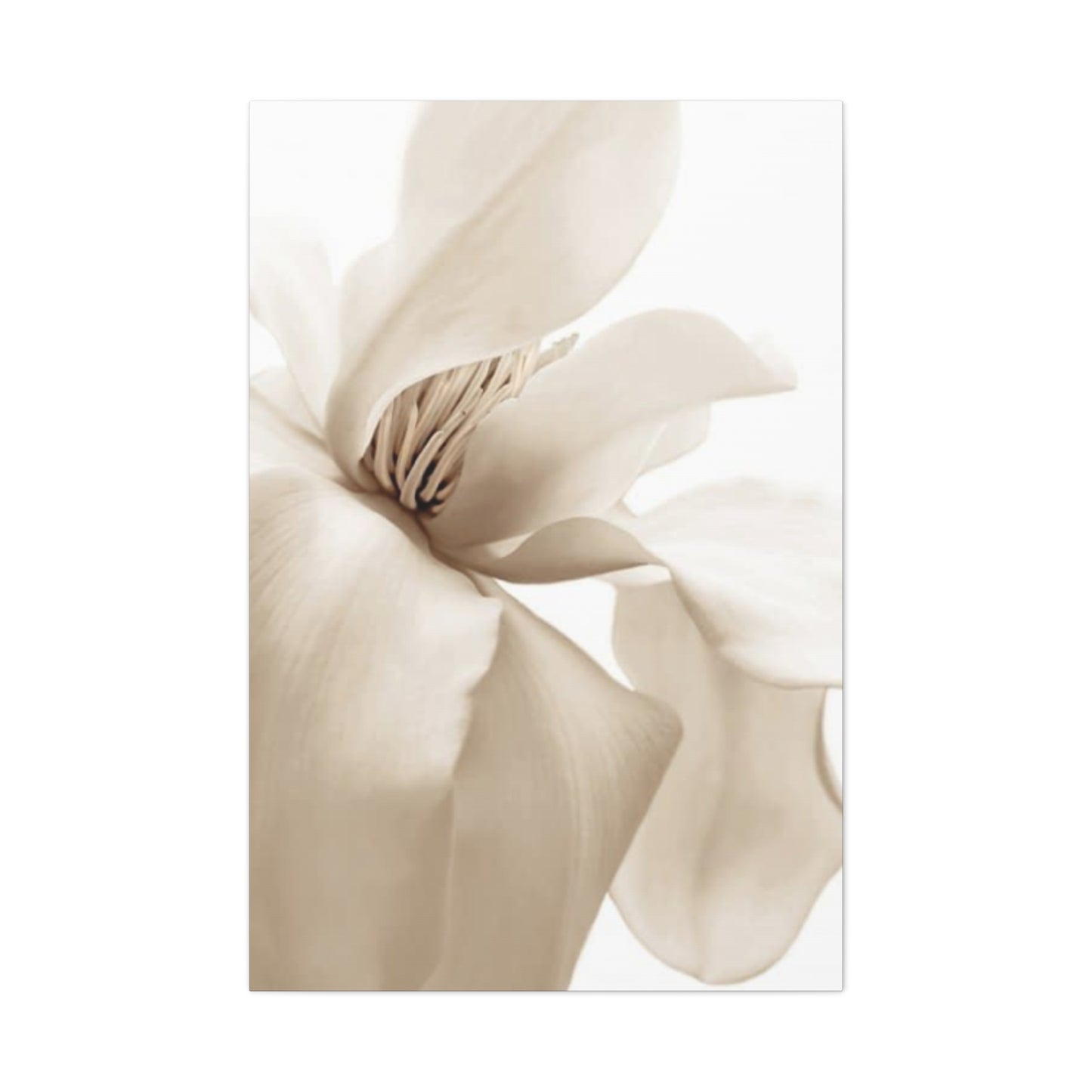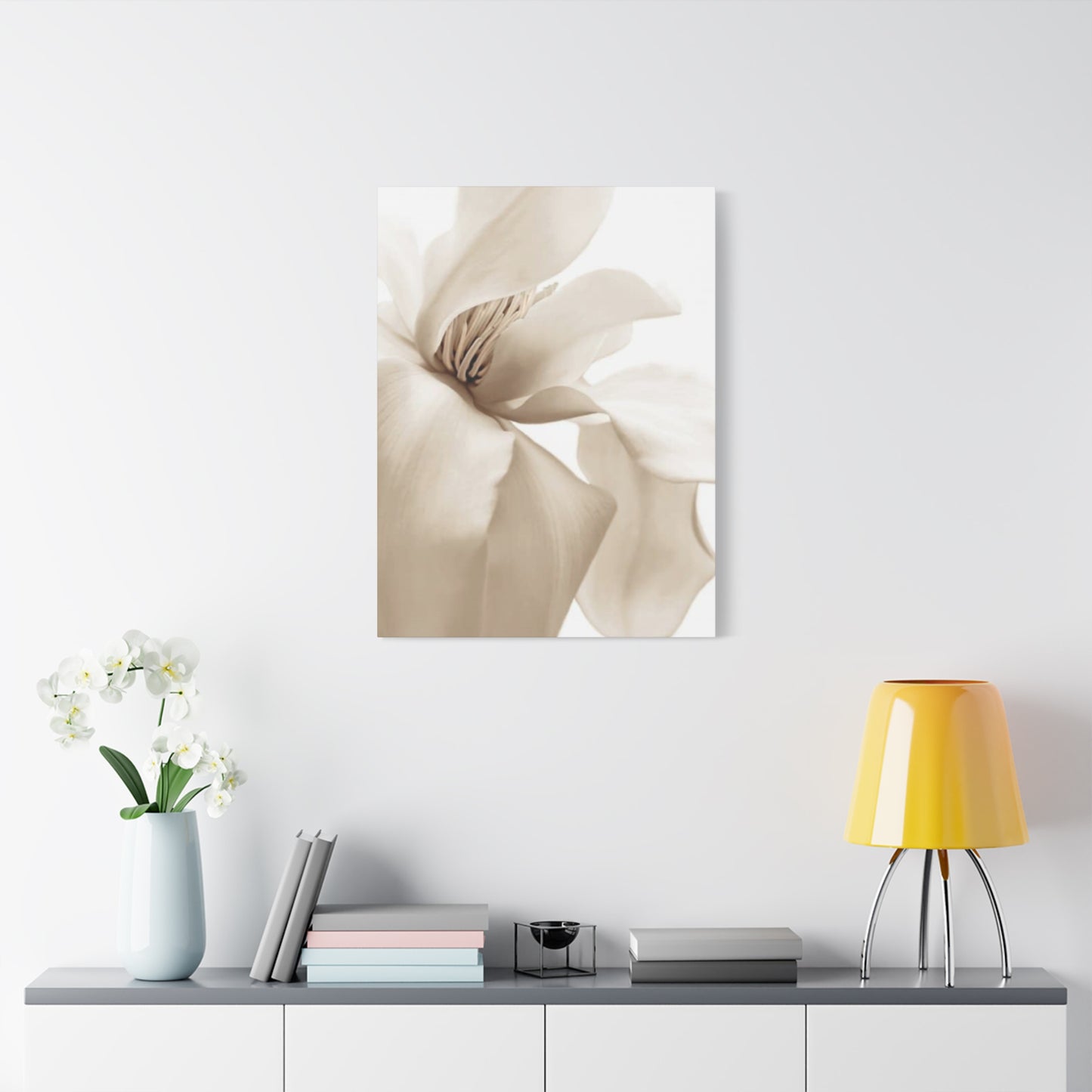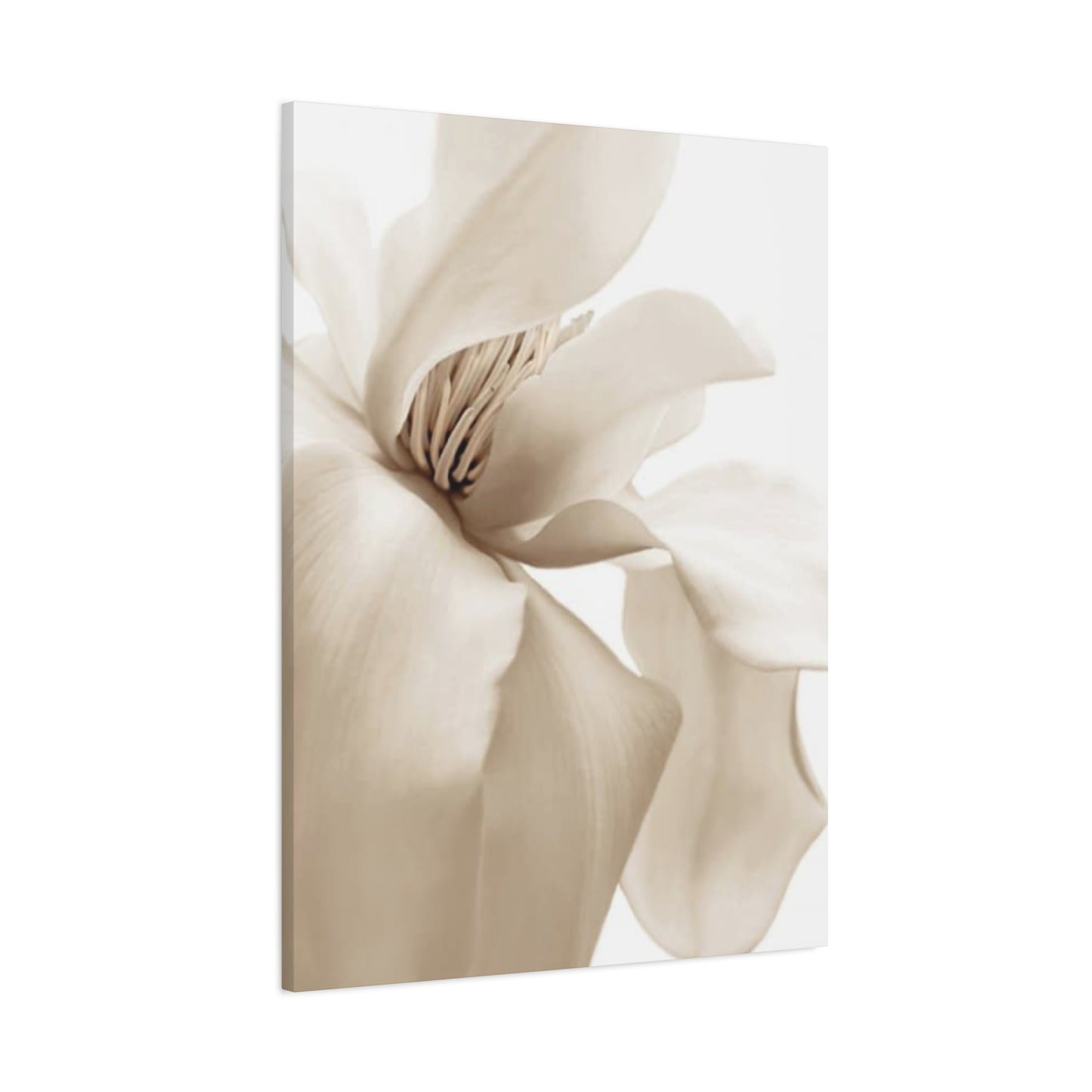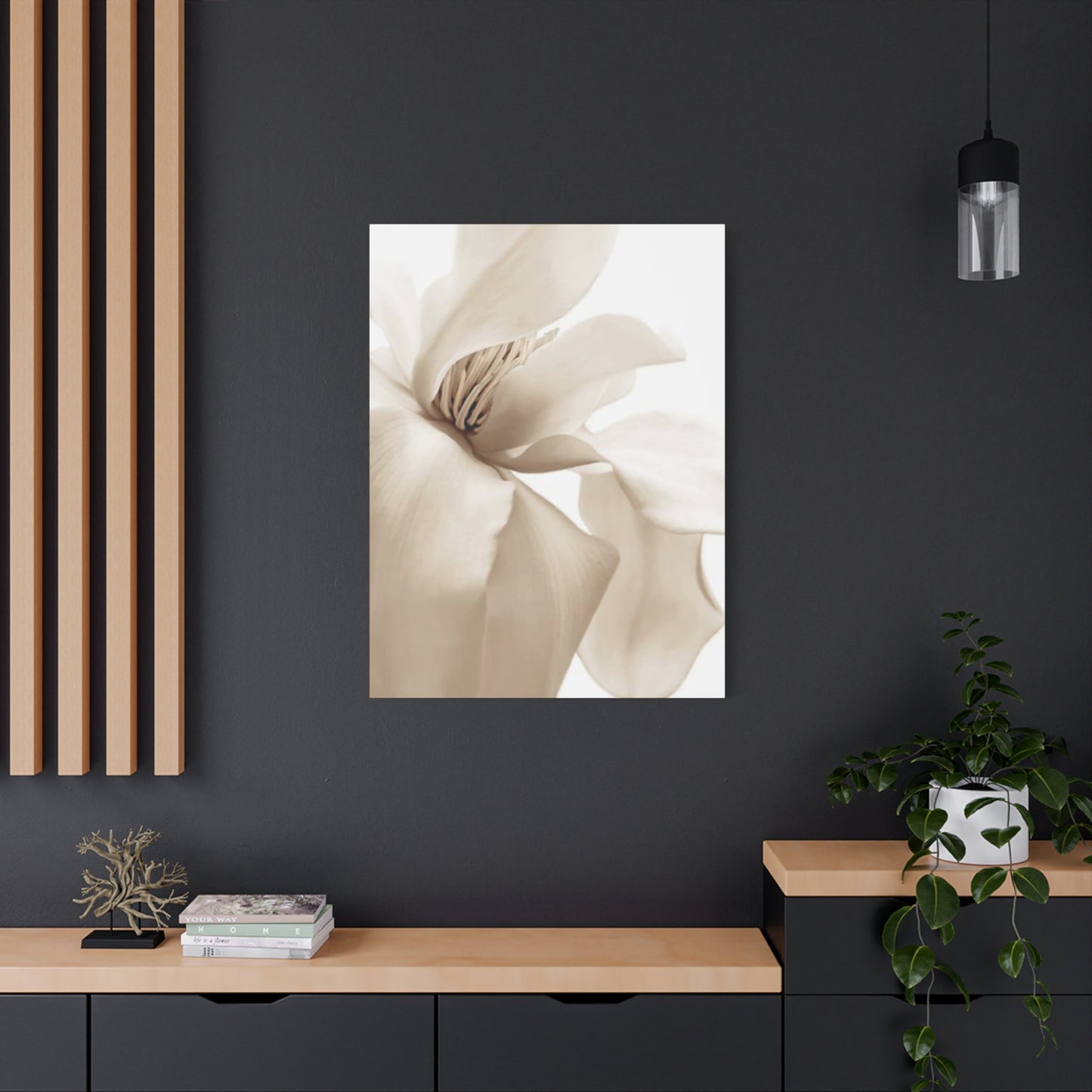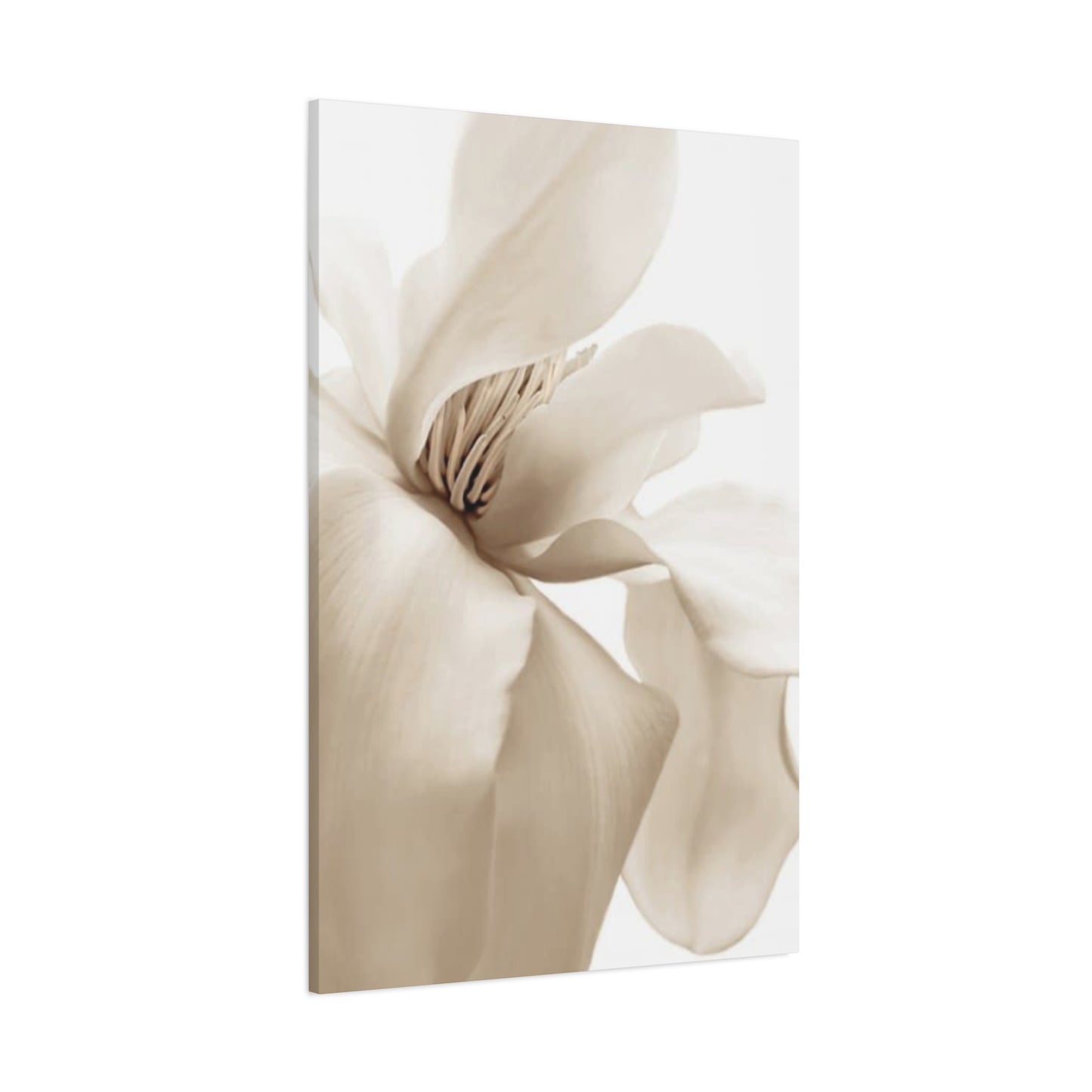Nature in Focus: The Allure of Magnolia Flower Close-Up Painting Wall Art
Magnolia flowers hold a timeless charm that embodies purity, grace, and natural sophistication. Their delicate yet commanding beauty has long made them a favorite subject among painters, photographers, and interior designers. When depicted in close-up wall art, magnolias transcend their botanical origins to become symbols of serenity and refinement, transforming ordinary walls into serene reflections of nature’s artistry. The magnolia’s velvety petals, layered symmetry, and soft hues lend themselves perfectly to detailed artistic interpretations that elevate both contemporary and traditional interiors.
The allure of magnolia close-up paintings lies in their ability to draw the viewer’s eye into the heart of the flower. Each brushstroke or captured photograph unveils textures and gradients often overlooked by the naked eye, celebrating the intricate balance between fragility and strength. Artists who specialize in botanical art often highlight the interplay of light and shadow across the petals, creating a captivating depth that makes the flower appear almost lifelike. This realism evokes a sense of tranquility and awe, making magnolia wall art an ideal choice for spaces meant to promote calmness — such as bedrooms, living rooms, and meditation areas.
When it comes to selecting magnolia close-up artwork, color palette and composition play a vital role. White magnolias against soft, muted backgrounds convey purity and minimalism, ideal for modern or Scandinavian-inspired interiors. Conversely, paintings featuring pink or golden tones bring warmth and romantic charm to classic or boho-style spaces. The size of the artwork also influences its impact; a large-scale magnolia close-up can serve as a breathtaking focal point above a sofa or bed, while smaller prints work beautifully in pairs or triptychs for hallways and intimate nooks.
Framing and placement are equally essential in enhancing the overall aesthetic. Sleek metallic or white frames accentuate the modern elegance of magnolia imagery, while natural wood frames emphasize its organic, earthy qualities. Positioning magnolia art where it catches natural light can amplify its luminous textures, allowing the soft glow of the petals to radiate through the room.Magnolia flower close-up wall art is more than just décor — it is an invitation to pause, appreciate, and reconnect with nature’s quiet grandeur. Through thoughtful selection and presentation, these timeless artworks bring harmony, beauty, and emotional resonance into any living space.
Enchanting Visuals: Close-Up Art for Any Room
Creating visual harmony in your home requires thoughtful consideration of the artwork you choose to display. Magnolia close-up art offers a versatile solution that works beautifully across various room types and design schemes. The inherent adaptability of magnolia imagery stems from its natural elegance and the way close-up perspectives emphasize universal qualities of beauty, tranquility, and sophistication.
When you examine magnolia close-up art, you immediately notice how the tight framing draws attention to details that might otherwise go unnoticed. The delicate veining on each petal, the subtle gradations from cream to blush pink, the way light plays across the smooth surfaces—these elements become focal points that command attention without overwhelming the viewer. This quality makes such artwork particularly effective in spaces where you want to create interest without visual chaos.
Living rooms benefit enormously from the presence of magnolia close-up art because these pieces provide conversation starters while maintaining a sense of calm refinement. Unlike busy abstract patterns or highly detailed landscapes that can fragment attention, magnolia close-ups offer a singular focus that allows the eye to rest while still providing visual stimulation. The organic curves of magnolia petals create natural movement within the composition, guiding the viewer's gaze in a gentle, circular pattern that feels both engaging and restful.
Bedrooms transform into serene sanctuaries when adorned with magnolia close-up art. The soft, rounded forms of magnolia petals echo the relaxation and comfort you seek in these private spaces. Choosing artwork that features magnolias in various stages of bloom can create subtle variety while maintaining thematic consistency. A partially opened bud might hang above a dresser, while a fully opened bloom could serve as the focal point above the bed, creating a narrative of growth and beauty that resonates on a subconscious level.
Dining areas gain sophistication and warmth from magnolia close-up art. The organic nature of floral imagery complements the communal, nurturing aspects of dining spaces. When guests gather around your table, magnolia artwork provides a beautiful backdrop that enhances the dining experience without distracting from conversation. The natural elegance of these flowers elevates the atmosphere, making everyday meals feel more special and formal dinners even more refined.
Home offices and study spaces often suffer from feeling too sterile or overly focused on function. Introducing magnolia close-up art into these environments softens the professional atmosphere while maintaining an air of competence and taste. The presence of nature-inspired artwork has been shown to reduce stress and improve focus, making magnolia pieces particularly valuable in work environments where concentration and calm are essential.
Bathrooms, frequently overlooked when it comes to serious artwork, can become spa-like retreats with the addition of magnolia close-up art. The association between magnolias and cleanliness, purity, and natural beauty makes these flowers ideal for spaces dedicated to personal care and relaxation. Choosing prints with moisture-resistant framing ensures your artwork remains pristine even in humid conditions.
Entryways and hallways benefit from the welcoming nature of magnolia close-up art. These transitional spaces often lack natural focal points, and a striking magnolia piece can transform a forgotten corridor into a gallery-like experience. The vertical orientation of many magnolia close-ups works particularly well in narrow hallway spaces, drawing the eye upward and making the area feel more spacious.
The versatility of magnolia close-up art extends beyond room type to encompass various design styles. Whether your home features traditional, contemporary, transitional, or eclectic decor, magnolia artwork adapts beautifully. Traditional spaces embrace the classic beauty of magnolias, contemporary settings appreciate the clean lines and minimalist composition of close-up photography, and eclectic interiors use magnolia art as a grounding element that ties together diverse design elements.
Color coordination becomes effortless with magnolia close-up art because these pieces typically feature neutral palettes with subtle color accents. White and cream magnolias complement virtually any color scheme, while pink-tinted varieties add warmth without overwhelming existing color stories. The green undertones present in some magnolia foliage provide natural connections to other botanical elements in your decor.
Scale considerations play a crucial role in maximizing the impact of magnolia close-up art. Large-scale pieces create drama and serve as statement artwork that defines the character of a room. Medium-sized pieces work well in groupings or as companion pieces to furniture arrangements. Smaller magnolia close-ups can be clustered in gallery wall arrangements or used to fill specific architectural niches.
Striking Floral Compositions: Magnolia Paintings in Focus
The bold presentation of magnolia paintings creates immediate visual impact that transforms ordinary spaces into sophisticated environments. When artists choose magnolias as their subject and employ close-up perspectives, they make deliberate choices about composition, color, and scale that result in artwork with undeniable presence and power.
Understanding what makes magnolia paintings bold begins with recognizing the inherent drama of the flower itself. Magnolia blooms are substantial, often measuring six to twelve inches across, with thick, sculptural petals that possess both delicacy and strength. When artists zoom in on these flowers, eliminating background distractions and focusing entirely on the bloom, they amplify the flower's natural grandeur. The result is artwork that doesn't whisper from the wall but speaks with confidence and clarity.
Contemporary magnolia paintings often push traditional boundaries by employing unexpected color palettes. While classic white and soft pink magnolias retain their popularity, modern artists explore bolder options including deep burgundy, vibrant coral, and even stylized interpretations featuring jewel tones or metallic accents. These unconventional approaches maintain the recognizable form of the magnolia while infusing the artwork with contemporary energy that appeals to design-forward homeowners.
The technique employed in magnolia paintings significantly influences their bold character. Thick impasto applications create tactile surfaces where paint stands in relief, casting shadows and catching light in ways that flat paintings cannot. These dimensional qualities make the artwork feel alive and dynamic, changing appearance throughout the day as natural light shifts across the surface. Oil paintings with heavy texture particularly excel at capturing the velvety quality of magnolia petals, with each brushstroke contributing to the overall sense of luxury and craftsmanship.
Watercolor magnolia paintings achieve boldness through different means, using the transparency and flow of the medium to create luminous effects. When skilled artists layer watercolors, allowing colors to bleed and blend naturally, they capture the translucent quality of magnolia petals backlit by sunlight. The resulting paintings possess an ethereal boldness—commanding attention through beauty and light rather than color intensity or heavy texture.
Acrylic magnolia paintings offer versatility that appeals to both traditional and contemporary sensibilities. Acrylics can be applied in thin, precise layers for detailed realism or in bold, gestural strokes for more expressive interpretations. The quick-drying nature of acrylics allows artists to build complex compositions with multiple layers, creating depth and richness that make magnolia paintings feel substantial and important.
Mixed media approaches to magnolia paintings introduce unexpected elements that enhance their bold character. Artists might combine traditional painting techniques with collage elements, incorporating textured papers, fabric, or metallic leaf to create surfaces that engage multiple senses. These innovative approaches appeal to collectors seeking artwork that pushes creative boundaries while still maintaining the timeless appeal of magnolia imagery.
The composition strategies employed in bold magnolia paintings deserve close examination. Many artists use extreme close-ups that show only a portion of the bloom, allowing petals to extend beyond the canvas edges. This cropping technique creates tension and energy, suggesting the flower's presence extends beyond what we can see. The viewer's imagination fills in the missing elements, creating a more engaging experience than a complete, centered floral portrait might provide.
Contrast plays a vital role in creating bold magnolia paintings. Artists might position pristine white petals against dark, moody backgrounds, creating dramatic opposition that makes the flower appear to glow from within. Alternatively, they might use complementary colors in the background that make magnolia hues appear more vibrant and alive. Understanding color theory allows artists to manipulate perception, making their magnolia paintings feel more dynamic and visually powerful.
Scale considerations in magnolia paintings cannot be overstated. A small magnolia painting, no matter how skillfully executed, has limited ability to command a large space. Bold magnolia paintings typically measure at least thirty inches in one dimension, with many statement pieces extending to four, five, or even six feet. These substantial dimensions allow the artwork to hold its own against architectural features and furniture, becoming a defining element of the room's design.
Lighting dramatically affects how bold magnolia paintings present themselves in your home. Artwork positioned to receive natural light during peak hours benefits from the way sunlight enhances colors and reveals textures. Strategic artificial lighting, such as picture lights or adjustable track lighting, ensures your magnolia paintings maintain their bold presence even after dark. The interplay between light, shadow, and painted surface creates a dynamic viewing experience that keeps the artwork interesting over time.
Creative Close-Up Magnolia Wall Art Ideas
Innovation in displaying magnolia wall art goes far beyond simply hanging a single framed print. Creative approaches to presentation can multiply the impact of magnolia imagery while expressing your personal style and design sensibility. Exploring various display strategies helps you discover arrangements that feel fresh, intentional, and perfectly suited to your space.
Gallery wall arrangements featuring multiple magnolia close-ups create cohesive focal points that tell a visual story. You might combine different views of the same magnolia variety—a tight close-up of the flower's center, a mid-range view showing the full bloom, and a wider shot including stem and leaves. This multi-perspective approach gives viewers a complete understanding of the flower while creating visual variety within a unified theme. Maintaining consistent framing styles and mat colors helps the individual pieces read as a intentional collection rather than random groupings.
Diptych and triptych presentations split a single magnolia image across multiple panels, creating dramatic impact through scale and composition. The breaks between panels add visual interest and contemporary sophistication to what might otherwise be a straightforward floral image. This approach works particularly well in spaces with architectural features that would interrupt a single large canvas, such as door frames or built-in shelving. The separated panels can flow around these obstacles while maintaining compositional integrity.
Layering techniques bring dimensional interest to magnolia wall art displays. Instead of hanging artwork flat against the wall, consider mounting pieces on wood blocks or using shadow box frames that create depth between the artwork and the wall surface. Some designers layer multiple pieces at different depths, creating a sculptural quality that transforms wall art into something approaching three-dimensional installation. This approach works especially well in minimalist interiors where the dimensional play provides visual interest without introducing color or pattern complexity.
Unexpected placement of magnolia wall art challenges conventional thinking about where artwork belongs. Instead of defaulting to the space above the sofa or bed, consider positioning magnolia art in surprising locations that create moments of delight. A large-scale magnolia close-up in a breakfast nook transforms morning coffee into a more elevated experience. Magnolia art positioned at the end of a hallway creates a visual destination that draws people through the space. Even closets and dressing areas can benefit from small magnolia prints that add beauty to utilitarian spaces.
Seasonal rotation of magnolia wall art keeps your decor feeling fresh throughout the year. You might display crisp white magnolia close-ups during spring and summer, emphasizing freshness and vitality, then switch to warmer, pink-toned magnolias for fall and winter, creating cozy sophistication. This rotation prevents artwork from fading into the background through over-familiarity while allowing you to build a larger collection of pieces that each receive proper appreciation.
Mixing magnolia wall art with complementary subjects creates dynamic displays with botanical themes. Combine magnolia close-ups with other flowering trees like cherry blossoms or dogwoods, creating a flowering tree collection. Alternatively, mix magnolias with other white flowers such as gardenias, peonies, or roses, building a palette-driven collection where form and texture provide variety while color consistency creates cohesion.
Custom framing choices dramatically alter how magnolia wall art presents itself. Traditional ornate frames in gold or silver finishes emphasize classic elegance, making magnolia art feel formal and timeless. Clean-lined contemporary frames in black, white, or natural wood create modern simplicity that lets the flower imagery take center stage. Choosing frames slightly larger than standard proportions creates generous mat space around magnolia images, giving them breathing room that enhances their serene quality.
Floating frame designs, where the artwork appears to hover within the frame structure, add contemporary sophistication to magnolia wall art. These frames work particularly well with canvas prints and photographs, creating the illusion that the magnolia image exists in three-dimensional space rather than on a flat surface. The shadow cast between the artwork and the frame backing adds subtle depth that makes the presentation feel more refined and gallery-worthy.
Color mat choices provide opportunities to enhance magnolia wall art in subtle but important ways. Warm white mats complement cream and blush-toned magnolias, creating cohesive presentations that feel soft and romantic. Cool white mats enhance the crispness of pure white magnolias against dark backgrounds, creating clean, contemporary presentations. Colored mats in soft sage, dove gray, or even pale pink can introduce additional design elements while still allowing the magnolia imagery to remain the focal point.
Digital display options for magnolia wall art embrace technological possibilities. Digital frames with high-resolution screens can rotate through collections of magnolia images, providing ever-changing displays that prevent visual fatigue. Smart displays can be programmed to show specific magnolia images during certain times of day or seasons, creating dynamic presentations that respond to context. While traditional printed artwork maintains certain aesthetic advantages, digital displays offer flexibility that appeals to tech-forward homeowners.
Refined Magnolia Paintings for Home Decor
Elegance in magnolia paintings stems from restraint, refinement, and careful attention to aesthetic balance. These qualities transform simple floral artwork into sophisticated design elements that elevate the entire character of a space. Understanding what creates elegance helps you select magnolia paintings that bring lasting beauty and refinement to your home.
The concept of elegance in art encompasses several interconnected qualities. Simplicity plays a fundamental role—elegant magnolia paintings avoid unnecessary complexity, focusing instead on essential forms and carefully chosen details. The composition feels effortless even though achieving that apparent ease requires considerable skill and planning. Every element serves a purpose, with nothing included merely for decoration or to fill space.
Palette restraint characterizes elegant magnolia paintings. Rather than employing the full spectrum of available colors, refined magnolia art typically works within a limited color story. Monochromatic schemes featuring various shades and tints of a single hue create sophisticated unity. Analogous color schemes, using colors adjacent on the color wheel, provide subtle variety while maintaining harmony. Even when elegant magnolia paintings include contrasting elements, they do so with discretion, using contrast as punctuation rather than exclamation.
Brushwork quality separates elegant magnolia paintings from ordinary floral art. In representational work, brushstrokes should be confident and purposeful, revealing the artist's skill without calling excessive attention to technique. The goal is making the flower itself the focus rather than the method of its creation. In more painterly or impressionistic magnolia work, brushstrokes become more visible but should still demonstrate control and intentionality. Loose, gestural strokes work beautifully when they capture the essence of magnolia form while maintaining refinement.
Subject handling in elegant magnolia paintings shows respect for the flower's natural beauty. Rather than distorting or overly stylizing the magnolia, refined paintings honor the bloom's inherent grace. This doesn't mean artwork must be photographically realistic—stylization has its place in elegant art. However, any departures from strict realism should enhance rather than detract from the magnolia's essential beauty. The artist's personal style should complement the subject rather than compete with it.
Elegant magnolia paintings often feature thoughtful negative space that allows the flower to breathe within the composition. Rather than filling every inch of canvas with detail or pattern, refined artists understand the power of emptiness. Strategic negative space directs attention to the magnolia bloom, creates visual rest that prevents overwhelm, and contributes to the overall sense of calm sophistication that defines elegant artwork.
The finish quality of magnolia paintings affects their elegance quotient. Professional varnishing protects the artwork while creating a unified surface quality that enhances color saturation and depth. Matte varnishes create subtle, understated presentations suitable for traditional or transitional spaces. Satin finishes offer gentle luster that adds refinement without drawing attention to the surface itself. High-gloss finishes work in contemporary settings where a more polished presentation aligns with the overall design aesthetic.
Elegant magnolia paintings often incorporate classical composition principles borrowed from centuries of artistic tradition. The golden ratio, a mathematical proportion found throughout nature and used by artists since antiquity, creates naturally pleasing arrangements. Magnolia blooms positioned according to these classical principles feel balanced and harmonious even to viewers unfamiliar with compositional theory. Similarly, traditional techniques like atmospheric perspective—where elements become lighter and less distinct as they recede—add depth and sophistication to magnolia paintings that include background elements.
The relationship between magnolia paintings and their framing significantly impacts overall elegance. The frame should enhance rather than overwhelm the artwork, with ornamentation levels matching the painting's style. Heavily detailed antique frames suit classical magnolia paintings with similar levels of refinement, while simple gallery frames better serve contemporary magnolia art. The frame color should complement the painting's palette without introducing jarring contrasts. Custom framing allows for precise matching between artwork and frame, ensuring the total presentation achieves maximum elegance.
Provenance and authenticity contribute to the elegance of magnolia paintings in ways that extend beyond pure aesthetics. Original artwork by recognized artists carries inherent sophistication that prints and reproductions cannot fully replicate. The knowledge that your magnolia painting is a unique creation, personally executed by a skilled artist, adds layers of meaning and value. For those working within tighter budgets, limited edition prints signed and numbered by artists offer middle-ground options that provide more exclusivity than mass-produced reproductions.
Elegant magnolia paintings function as investments in your living environment that pay dividends in daily pleasure and long-term value. Unlike trendy decor items that quickly feel dated, refined magnolia artwork maintains relevance across changing design fashions. The timeless appeal of magnolias combined with elegant execution ensures these paintings remain beautiful and appropriate for decades. This longevity makes elegant magnolia paintings wise choices for homeowners seeking to build cohesive, enduring collections rather than following temporary trends.
Impactful Magnolia Flower Art That Makes a Statement
Creating visual statements through magnolia flower art requires understanding the difference between artwork that decorates and artwork that defines a space. Statement pieces command attention, establish design direction, and reflect the owner's confidence and taste. When magnolia art achieves statement status, it transforms from simple decoration into an essential element of the room's identity.
Scale represents the most obvious factor in creating statement magnolia art. Large-scale pieces naturally draw the eye and establish themselves as focal points. However, size alone doesn't guarantee statement status—a poorly executed large painting may dominate through mass without creating positive impact. True statement magnolia art combines substantial dimensions with artistic merit, technical skill, and distinctive vision. When all these elements align, the result is artwork that justifies its prominent position and enhances rather than overpowers the space.
Unconventional perspectives contribute to statement quality in magnolia art. Instead of presenting magnolias from standard angles, statement pieces might show extreme close-ups where individual petal surfaces fill the entire frame, revealing textures and details invisible to casual observation. Alternatively, unexpected vantage points—looking up into magnolia blooms from below or viewing them from directly overhead—create fresh interpretations of familiar subjects. These novel perspectives challenge viewers' expectations and make magnolia art feel contemporary and innovative.
Color intensity separates statement magnolia art from subtler interpretations. While soft pastels and neutral tones have their place, statement pieces often employ saturated colors that project confidence and energy. Deep burgundy magnolias against charcoal backgrounds create moody sophistication. Vibrant coral blooms paired with teal accents deliver contemporary punch. Even traditional white magnolias become statement-worthy when presented with intense value contrasts or unusual color contexts that make them appear luminous and dynamic.
Artistic style strongly influences statement potential in magnolia art. Hyperrealistic magnolia paintings demonstrate technical mastery that commands respect and attention. The incredible detail and perfect rendering make viewers stop and examine the work closely, marveling at the artist's skill. Conversely, bold abstract interpretations of magnolia forms create statements through expressive freedom and emotional impact. Both approaches can create powerful statements—the key is commitment to the chosen style and skillful execution that demonstrates artistic vision.
Statement magnolia art often incorporates unexpected materials or techniques that distinguish it from conventional floral paintings. Metallic leaf accents add luxury and catch light in ways that pure paint cannot. Textural additions—perhaps actual pressed flowers embedded in resin or three-dimensional elements that extend from the picture plane—create tactile interest that makes artwork feel more like sculpture than painting. These innovative approaches appeal to collectors seeking magnolia art that pushes boundaries and defies easy categorization.
The backstory and provenance of magnolia art can contribute to its statement quality. Pieces created by recognized artists carry the weight of reputation and achievement. Artwork with interesting creation stories—perhaps magnolias painted on location at historic gardens or pieces created using unusual processes—gain narrative depth that enhances their impact. Commission work designed specifically for your space holds special statement potential because the artwork exists in perfect dialogue with its architectural context and your personal aesthetic preferences.
Statement magnolia art requires careful consideration of display context. These pieces need adequate space to breathe and sufficient visual clearance to be properly appreciated. Placing statement magnolia art in cramped quarters or visually cluttered environments diminishes impact and wastes the artwork's potential. Ideally, statement pieces should occupy walls with minimal competing elements, allowing them to establish themselves as undisputed focal points. Furniture arrangements should acknowledge and complement the artwork rather than compete with it for attention.
Lighting design becomes crucial when displaying statement magnolia art. These important pieces deserve lighting that reveals their qualities and maintains their prominence throughout the day. Natural light during daytime hours should complement rather than damage the artwork—be mindful of direct sun exposure that can fade colors over time. Dedicated artificial lighting through picture lights, track lighting, or recessed fixtures ensures statement magnolia art remains visible and impactful even after dark. Adjustable lighting allows you to modify intensity and angle to suit different occasions and moods.
Statement magnolia art often benefits from breathing room in terms of surrounding decor. While supporting elements enhance the overall design, too many competing details fragment attention and dilute impact. Clean walls flanking statement magnolia art create visual rest that makes the central piece appear even more significant. Minimal styling of nearby surfaces—perhaps a single sculptural object or carefully chosen accessories—supports without competing. The goal is creating a composed vignette where every element contributes to highlighting the statement magnolia art.
The psychological impact of statement magnolia art extends beyond pure aesthetics. These significant pieces create emotional anchors in your home, establishing specific moods and feelings in the spaces they occupy. A dramatic magnolia painting in deep, rich colors might create intimate sophistication in a dining room, while a bright, airy magnolia piece could bring energizing freshness to a home office. Understanding how you want to feel in each space helps guide selection of statement magnolia art that delivers not just visual impact but emotional resonance.
Gentle and Beautiful: Magnolia Close-Ups
The soft approach to magnolia close-up art emphasizes the gentle, peaceful qualities these flowers naturally possess. Rather than bold drama or striking contrast, soft magnolia art creates atmosphere through subtlety, delicate color, and compositions that whisper rather than shout. This aesthetic choice produces artwork particularly suited to spaces where tranquility and calm are priorities.
Color palettes in soft magnolia close-ups typically feature pastels, neutrals, and colors with high white content that appear muted and gentle. Blush pink magnolias barely distinguishable from white, creamy petals with the faintest yellow undertones, and soft lavender-tinged varieties create color stories that feel dreamy and romantic. These subtle hues work beautifully in bedrooms, nurseries, and other intimate spaces where harsh colors would feel intrusive and disruptive.
Lighting within soft magnolia close-up art plays a special role in creating ethereal effects. Diffused lighting suggests overcast days or early morning mist, bathing magnolia blooms in even, gentle illumination that minimizes harsh shadows. Backlighting creates luminous petals that seem to glow from within, emphasizing the translucent quality of magnolia tissue. These lighting approaches transform magnolias from solid objects into almost spiritual presences that feel weightless and pure.
Compositional softness in magnolia close-ups involves careful attention to visual flow and the absence of jarring elements. Curves dominate over straight lines, petals overlap in gentle layers, and forms blend smoothly without abrupt transitions. The overall effect feels organic and natural, as if the magnolia bloom arranged itself for maximum beauty and grace. This compositional approach makes soft magnolia art feel effortless and uncontrived, qualities that enhance its calming effect.
Focus choices in photography-based soft magnolia close-ups create dreamy effects through selective sharpness. The primary subject—perhaps the magnolia's center or a particular petal—appears in crisp detail while surrounding elements fade into gentle blur. This shallow depth of field mimics human vision when we concentrate on specific objects, creating intimacy between viewer and bloom. The soft, out-of-focus areas provide gentle color and form without demanding attention, allowing the eye to rest comfortably on the sharp central element.
Artistic techniques for achieving softness in painted magnolia close-ups include feathered brushwork, subtle blending, and layering of transparent glazes. Rather than applying paint in distinct, separate strokes, artists creating soft effects might use dry brush techniques that leave minimal texture, or they might blend colors extensively to eliminate visible transitions. Watercolor artists achieve remarkable softness through wet-on-wet techniques where colors flow into each other naturally, creating gradations and bleeds that enhance the gentle quality.
Soft magnolia close-ups often incorporate generous amounts of white space or very pale backgrounds that enhance the peaceful quality of the composition. Unlike dramatic magnolia art with dark, contrasting backgrounds, soft interpretations might feature backgrounds only slightly different in value from the magnolia petals themselves. This low contrast approach prevents visual shock and maintains a consistent mood of tranquility throughout the composition.
The emotional response to soft magnolia close-ups differs markedly from reactions to bolder interpretations. While dramatic magnolia art might evoke awe or excitement, soft renditions typically inspire feelings of peace, comfort, and gentle joy. These pieces function as visual sanctuaries within your home, places where your eyes can rest and your mind can quiet. The subtlety of soft magnolia art means it never feels overwhelming or demanding, making it suitable for spaces where you spend extended time and need environmental calm.
Soft magnolia close-ups pair beautifully with specific interior design styles, particularly those emphasizing comfort and relaxation. Shabby chic interiors with their distressed finishes and vintage accessories embrace soft magnolia art as natural companions. Romantic traditional spaces benefit from the classic beauty of softly rendered magnolias. Minimalist contemporary rooms use soft magnolia art to introduce organic elements and warmth without compromising clean simplicity. Even in bolder, more colorful interiors, soft magnolia pieces can provide visual rest areas that prevent the overall design from feeling chaotic.
Seasonal appropriateness makes soft magnolia close-ups particularly versatile. While bold, saturated colors might feel at odds with certain seasons, the gentle neutrality of soft magnolia art works year-round. Spring and summer embrace soft magnolias as expressions of blooming gardens and gentle weather. Fall welcomes them as reminders of natural beauty during harvest season. Winter finds comfort in their quiet elegance during months of dormancy. This seasonal flexibility means soft magnolia art never feels wrong or out of place regardless of the calendar.
The longevity of soft magnolia close-ups as design elements extends beyond trendy alternatives. Bold, attention-grabbing art can become tiresome over time as the constant visual stimulation proves wearing. Soft magnolia art, by contrast, ages beautifully in your awareness. The gentle quality that initially attracted you continues providing pleasure without overwhelming your senses or demanding constant attention. This enduring appeal makes soft magnolia close-ups wise investments for homeowners building thoughtful, lasting collections.
Understanding Why Magnolia Art Feels So Peaceful
The profound sense of peace many people experience when viewing magnolia art stems from multiple interconnected factors spanning psychology, aesthetics, and cultural associations. Exploring these elements helps explain why magnolias function so effectively as subjects for calming, meditative artwork that enhances wellbeing and creates restorative environments.
The inherent symmetry and balanced proportions of magnolia blooms activate aesthetic preferences rooted in human neurology. Research in neuroaesthetics reveals that brains respond positively to balanced, symmetrical forms, processing them more easily and deriving pleasure from the cognitive efficiency this organization provides. Magnolia flowers, with their radially symmetrical petal arrangements, satisfy these deep-seated preferences. When viewing magnolia art, our brains experience the satisfaction of processing harmonious, well-ordered visual information, contributing to the overall sense of peace.
Color psychology plays a significant role in the peaceful quality of magnolia art. White magnolias, the most common subjects, trigger associations with purity, cleanliness, and simplicity—concepts that promote mental clarity and emotional calm. The soft pastels frequently appearing in magnolia art—blush pinks, pale yellows, gentle greens—register as non-threatening and soothing to human perception. Unlike intense, saturated colors that stimulate and energize, the subtle hues of most magnolia art support relaxation and contemplation.
The natural origin of magnolia imagery connects viewers to biophilic responses—the innate human attraction to nature and natural systems. Evolutionary psychology suggests humans feel calmer and more secure in environments containing natural elements because such settings historically provided resources and safety. Magnolia art brings these biophilic benefits indoors, creating connections to nature even in urban apartments or windowless offices. The presence of floral imagery, even in artistic representation, activates these deep-seated responses, reducing stress and promoting wellbeing.
Cultural and historical associations enhance the peaceful quality of magnolia art. In many traditions, magnolias symbolize nobility, purity, and dignity. These positive associations create favorable emotional contexts when viewing magnolia imagery. The flowers' ancient lineage—magnolias existed before bees, evolving to be pollinated by beetles—connects them to timelessness and endurance. This deep history imbues magnolia art with qualities that transcend momentary trends, contributing to feelings of stability and permanence that support peace of mind.
The gentle, organic forms characteristic of magnolia blooms lack the aggressive angles and sharp points that can create subconscious tension. Rounded petal edges, flowing curves, and soft overlapping forms feel welcoming and non-threatening. These qualities make magnolia art particularly suitable for spaces where stress reduction is important. Healthcare facilities, therapy offices, and meditation spaces frequently incorporate magnolia imagery because of these calming formal qualities.
The scale and proportion of magnolia blooms as depicted in close-up art create focusing effects that support meditation and mindfulness. When viewing a magnolia close-up that fills the visual field, attention naturally concentrates on the flower itself rather than fragmenting across multiple elements. This focusing effect mirrors meditation practices that emphasize singular attention, creating similar mental states of calm concentration. The simplicity of the subject—one beautiful bloom—prevents the mental scatter that complex, busy imagery might provoke.
Viewing magnolia art can trigger positive memories and associations for many people, enhancing the peaceful response. Perhaps someone remembers magnolia trees from childhood, or associates the flowers with pleasant experiences in gardens or parks. These personal connections add emotional depth to the aesthetic experience, making magnolia art feel personally meaningful rather than merely decorative. Even without specific memories, the universally positive associations most people hold regarding flowers and gardens contribute to the peaceful atmosphere magnolia art creates.
The relatively simple, uncluttered compositions typical of magnolia art support visual rest and cognitive ease. Unlike complex narrative paintings requiring interpretation or abstract works demanding intellectual engagement, magnolia close-ups offer immediate, accessible beauty. Viewers can appreciate them without effort or analysis, allowing the mind to relax rather than work. This quality makes magnolia art particularly valuable in modern environments where constant stimulation and information overload create cognitive fatigue.
The timeless quality of magnolia art contributes to its peaceful effect. Unlike imagery strongly associated with particular eras or styles that might feel dated or trendy, magnolia blooms possess eternal beauty that transcends specific time periods. This timelessness creates stability and continuity in your living environment, qualities that support the sense of home as sanctuary. When design elements feel ephemeral and changeable, they can create subtle anxiety. Magnolia art's enduring beauty provides reassuring permanence.
Research on attention restoration theory explains another dimension of why magnolia art feels peaceful. This theory suggests natural environments allow "soft fascination"—a gentle, effortless form of attention that allows directed attention mechanisms to rest and restore. Magnolia art triggers similar responses, providing visual interest that captures attention without requiring intense focus. This soft fascination gives overworked attention systems respite, explaining why spending time in rooms with magnolia art can feel restorative after mentally demanding activities.
Styling with Magnolia Petal Paintings
Creating cohesive, beautiful spaces around magnolia petal paintings requires understanding principles of interior design, color coordination, and spatial arrangement. The distinctive characteristics of petal-focused artwork—the tight cropping, emphasis on texture and form, abstracted quality—present both opportunities and considerations for styling that differ from more traditional floral art.
Furniture selection and arrangement should acknowledge magnolia petal paintings without being enslaved to them. When a petal painting serves as the room's focal point, furniture groupings should orient partially toward the artwork, creating sightlines that naturally draw attention to the piece. However, rooms should maintain functional arrangements that serve daily living needs. A sofa shouldn't be positioned awkwardly just to face artwork if doing so compromises conversation, television viewing, or traffic flow. Instead, seek balanced arrangements where the petal painting occupies visual importance without dictating impractical furniture placement.
Color extraction from magnolia petal paintings provides an excellent strategy for developing cohesive color schemes. Identify the three to five most prominent colors in the artwork, including background hues, and use these as the foundation for room colors. Perhaps the petal painting features cream petals with blush undertones against a soft gray-green background. These colors might translate into cream walls, blush accent pillows, and gray-green curtains. This extraction approach ensures the magnolia artwork feels integrated into the room's design rather than arbitrarily placed.
Textile choices significantly impact how magnolia petal paintings integrate into room design. Smooth, lustrous fabrics like silk or satin echo the velvety quality of magnolia petals, creating textural harmony. Linen and cotton with soft hand-feel provide natural, organic counterpoints that enhance the botanical character of petal artwork. Even when patterns appear in textiles, keeping them subtle prevents competing with the magnolia painting for attention. Small-scale geometric patterns, tone-on-tone florals, or simple stripes work better than bold, large-scale prints that might clash with or overwhelm petal artwork.
Conclusion
The captivating world of magnolia flower close-up painting wall art reveals how nature, when rendered through the lens of artistic mastery, can transform interior spaces into sanctuaries of grace, beauty, and emotional resonance. These artworks capture more than the physical elegance of the magnolia; they encapsulate its symbolic depth — purity, perseverance, and the quiet strength of natural beauty. A close-up depiction of magnolia blossoms invites viewers into an intimate relationship with nature’s delicate details, allowing them to appreciate every curve, texture, and subtle gradient of color that often goes unnoticed in everyday life. As both a design element and a piece of emotional storytelling, magnolia close-up art stands at the intersection of natural inspiration and refined creativity, making it an ideal addition for art lovers and interior design enthusiasts alike.
What makes magnolia close-up paintings so alluring is their ability to focus attention on the essence of the flower — its softness, radiance, and structural harmony. Artists often magnify the smallest details: the gentle ripple of a petal, the interplay of shadow and light, or the dewdrops glistening along a bloom’s edge. This perspective transforms something familiar into something profound, emphasizing the beauty found in simplicity. Whether painted in muted tones for a tranquil, minimalist atmosphere or in vivid hues that highlight the flower’s vitality, these artworks create a visual experience that is simultaneously calming and uplifting. The magnolia, in close-up form, becomes not just a flower but a metaphor for stillness, renewal, and the exquisite artistry inherent in nature itself.
In terms of interior design, magnolia flower close-up wall art offers remarkable versatility. Its serene composition makes it an ideal choice for spaces that prioritize balance, light, and harmony — such as bedrooms, meditation areas, and living rooms. A large-format canvas can serve as a dramatic focal point, while smaller prints can add elegance to hallways, studies, or dining spaces. The color palette of magnolia art — typically soft whites, creams, blush pinks, and gentle yellows — complements a wide variety of design styles, from contemporary minimalism to vintage romanticism. When paired with neutral tones, natural wood textures, or gold-accented frames, magnolia paintings exude a sense of timeless sophistication that enhances the visual unity of a space.
Beyond their aesthetic appeal, magnolia close-up artworks carry emotional and symbolic weight that contributes to a home’s atmosphere. Magnolias are deeply connected to ideas of endurance, beauty, and the unfolding of life’s quiet miracles. Displaying magnolia art invites a sense of calmness and introspection, serving as a daily reminder to slow down and appreciate subtle details. It is no surprise that these artworks often find their place in spaces intended for reflection or emotional grounding — such as reading nooks, spas, or serene office corners. Their organic imagery connects inhabitants to the natural world, fostering emotional well-being and visual harmony within interior environments.
The artistic diversity of magnolia close-up paintings also allows collectors to explore various interpretations of the same subject. Some artists embrace hyperrealism, capturing every detail with photographic precision, while others lean toward abstraction, emphasizing the flower’s shapes and hues to evoke emotion rather than representation. Textured brushwork, layered pigments, or mixed-media techniques add further depth, creating pieces that engage not only the eye but also the imagination. This breadth of artistic expression ensures that magnolia wall art remains both timeless and adaptable, capable of resonating with a wide spectrum of artistic tastes.
Ultimately, magnolia flower close-up painting wall art embodies the harmony between art and nature — a visual meditation that celebrates life’s quiet beauty. Its elegance lies not in extravagance but in the profound simplicity of form and color, making it an enduring choice for collectors and decorators seeking refinement and serenity.
In conclusion, the allure of magnolia close-up wall art resides in its capacity to transform any space into a haven of tranquility and elegance. These paintings encapsulate nature’s perfection through meticulous detail and artistic sensitivity, bridging the gap between the organic world and human creativity. Whether serving as a centerpiece or a subtle accent, magnolia artwork enriches interiors with its soothing presence, timeless grace, and symbolic depth. To live among magnolias on canvas is to embrace nature’s quiet poetry — a reminder that beauty, when seen up close, has the power to inspire, comfort, and elevate the soul.

















